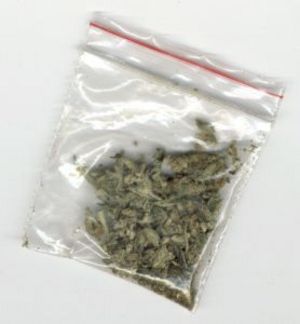Los Angeles is not known for any one architectural style in particular. It is a city that contains modern glass curtain skyscrapers and buildings that look like giant hot dogs. But Los Angeles does have several of the best example of the Art Deco architectural style to be found anywhere. Here is a guide to some of these sites not to be missed.
Pasadena City College, 1570 East Colorado Blvd., Pasadena
After an earthquake in 1933, building codes in California were updated to prevent structural damage from these inevitable natural shakes. Pasadena Junior College, as it was known then, had to shut down its three major buildings for restructuring compliance. These buildings had been named after early 20th century notables: Horace Mann, a social engineer attributed with conceiving the plan for our modern education system; Jane Addams, a proponent of the women’s suffrage movement and co-recipient of the 1931 Nobel Peace Prize, and; Dr. Louis Agassiz, a Harvard naturalist who proved the earth had an Ice Age. None of these notables had any particular connection to Pasadena, or Los Angeles, for that matter. When the school rededicated its buildings in 1937, it renamed these structures with the bland labels of Buildings C, D and E. The campus may have lost some names, but it gained a dramatic new quad area. With the help of funding from the Federal Administration of Public Works, Pasadena City College blossomed into an impressive Art Deco site which is still in evidence today. The three main buildings are made even more impressive by the campus reflecting pools, or “mirror ponds” as the school refers to them. This quad area makes a perfect photo opportunity.
Oviatt Building, 617 S. Olive Street, Los Angeles
This opulent structure was built in 1927 by the architectural firm of Walker & Eisen as the headquarters of Alexander & Oviatt, a high-end haberdashery of the day. It was topped by a luxurious penthouse for owner James Oviatt. It is reported that the forecourt of the lobby contained over 30 tons of glasswork by the famous French designer Rene Lalique. Features such as the mailboxes, directory signs and elevator doors were custom created by Lalique. Most of the glasswork has been sold, demolished or lost over the years. But some of the original work remains, especially at the lobby column topping panels. The original Alexander & Oviatt retail space has seen several incarnations of restaurants over the years, but still has the amazing Art Deco ceiling, fixtures and stair rails. Mr. Oviatt’s penthouse was a shrine to Art Deco. It also dripped in Lalique glasswork and featured geometric parquet inlaid wood floors. It was known for its terrace gardens, tennis courts, pool and artificial beach with imported sand and palm trees. A great neon clock tower rises above the penthouse area, reminding us that the time of such meticulously crafted architecture has come and gone.
Eastern Columbia Building, 849 S. Broadway, Los Angeles
Perhaps the most prominent clock in the downtown Los Angeles area is the four-faced clock on the tower of the Eastern Columbia Building in the Broadway Theater District. This monument to Art Deco was built in 1930 by architect Claud Beelman for Adolph Sieroty, who is not exactly a household name in Los Angeles today, but was the largest retailer of his time. Sieroty owned both the Eastern Outfitting Company and the Columbia Outfitting Company, selling furnishings, appliances and clothing. This building served as dual headquarters, with each company occupying opposite sides of the structure. The structure is distinctive for its glossy turquoise colored terra cotta cladding and gold leaf detailing. Art Deco motifs abound, with chevrons, stylized plants, zigzags and sunburst patterns. Originally, the building was meant to accommodate mixed use, with office space above a retail pedestrian arcade. Sieroty’s son remodeled in 1956 to pure office space. The building experienced refurbishing in the 1980s, and is currently being convered to accommodate residential units.
Southern California Edison Company Building, 601 W. 5th Street, Los Angeles
Everything about this building says it it the home of a major utility company. The entrance to the limestone and terra cotta structure features Art Deco friezes of allegorical figures rendered by sculptor Merrell Gage in symbolic representation of light, power and hydroelectric energy. Inside the lobby, a huge mural by Hugo Ballin tells the story of the Edison Company as the alchemist that magically turns water into power. It is titled “The Apotheosis of Power.” The dramatic punch of this structure has been watered down by the addition of a shopping corridor in the 1990s, but enough of the original remains to deserve a visit.
Bullocks-Wilshire Department Store, 3050 Wilshire Blvd., Los Angeles
It is more accurate to refer to this site as the Southwestern University School of Law, as that is the new proprietor. Although the building no longer serves as a retail store, it is alive and well as the university’s law library and administrative offices. It is such adaptive reuse that saved Bullocks from possible demolition and oblivion. What a loss it would have been. This outstanding example of Art Deco was designed by architects John and Donald Parkinson in 1928. It was one of the first businesses to recognize the rise of automobile traffic over pedestrian traffic. In order to accommodate, the floorplan in essence turned its back on Wilshire Blvd. and opened its portals to the parking lot on the reverse side of the building. It is on that side you will find the grand porte cochere featuring a gorgeous fresco on the ceiling by Herman Sachs paying tribute to modern modes of transportation. A dominant aspect of the Bullocks building is the 241 foot tower rising from the north fascade. This outstanding structure rests on a black marble base and has copper spandrels and chevron details between tan colored terra cotta. The copper has oxidized to a rich green, giving the whole structure a sophisticated patina.



